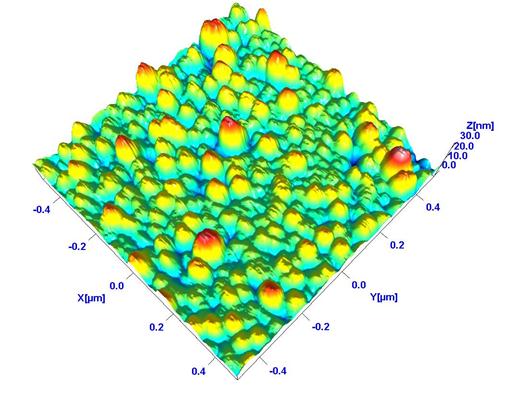By Kalwinder KaurSep 21 2012
OIST’s Biological Systems Unit is a research group currently working on making microbial fuel cells fueled by waste, which are economic and effective enough for practical applications. It is possible that waste generated will solve the energy problems of humans. Some researchers believe that bacteria can chow down everything from heavy metals to sewage and generate electricity as their waste.
 A 3D atomic force microscope topography image of metallic nanoparticles deposited on graphite.
A 3D atomic force microscope topography image of metallic nanoparticles deposited on graphite.
In order to reach this goal, the team faced the challenge of designing robust and economic electrodes that are good conductors of electricity, corrosion-resistant, and do not poison bacteria clinging to their surfaces. The Nanoparticles by Design Unit is working in tandem with the Biological Systems Unit to construct and test novel types of electrodes studded with nanoparticles. A core of less expensive material is coated with a fine layer of a costly biocompatible metal, after which the resulting nanoparticles are stuck to a carbon electrode’s surface. Along with using the properties of the costly metal and a very low cost, the electrode’s surface area is also increased resulting in the hosting of more bacteria that can generate electricity.
It has been discovered by other researchers that carbon electrodes studded with nanoparticles improve MFCs electricity output 20 times when compared with simple carbon electrodes. Mukhles Sowwan, the head of Nanoparticles by design Unit, hopes to increase this output by trying with a range of compositions, sizes and methods of nanoparticle pinning to the surface of the electrode. Sowwan believes that this novel multidisciplinary technique in the application of advanced research can lead to developing effective microbial fuel cells.
Disclaimer: The views expressed here are those of the author expressed in their private capacity and do not necessarily represent the views of AZoM.com Limited T/A AZoNetwork the owner and operator of this website. This disclaimer forms part of the Terms and conditions of use of this website.